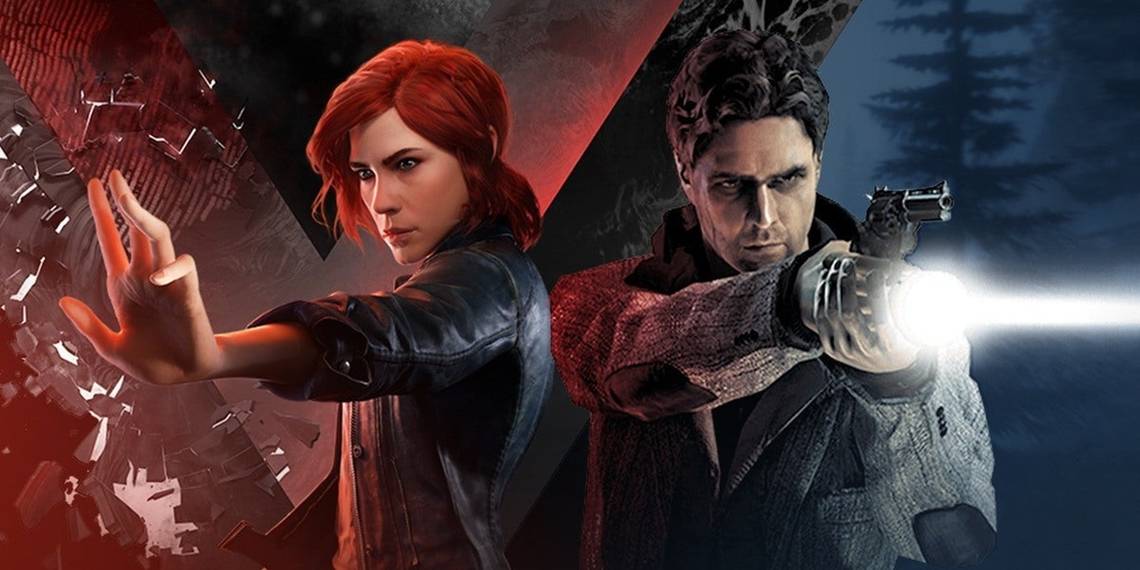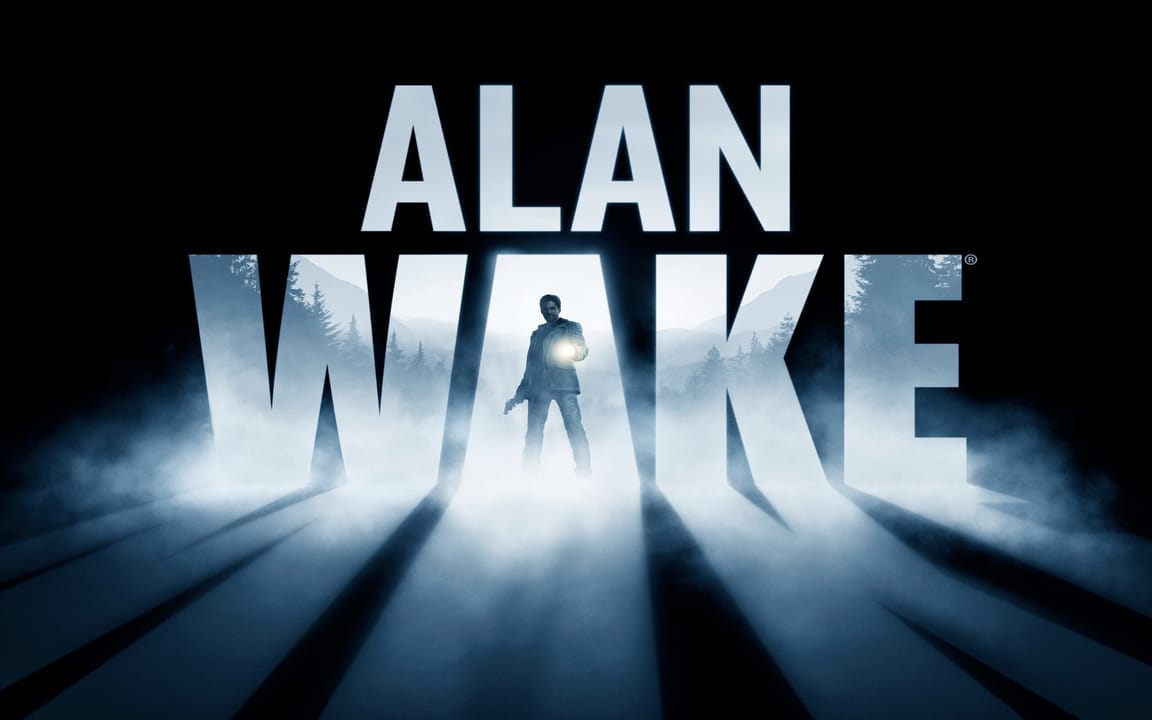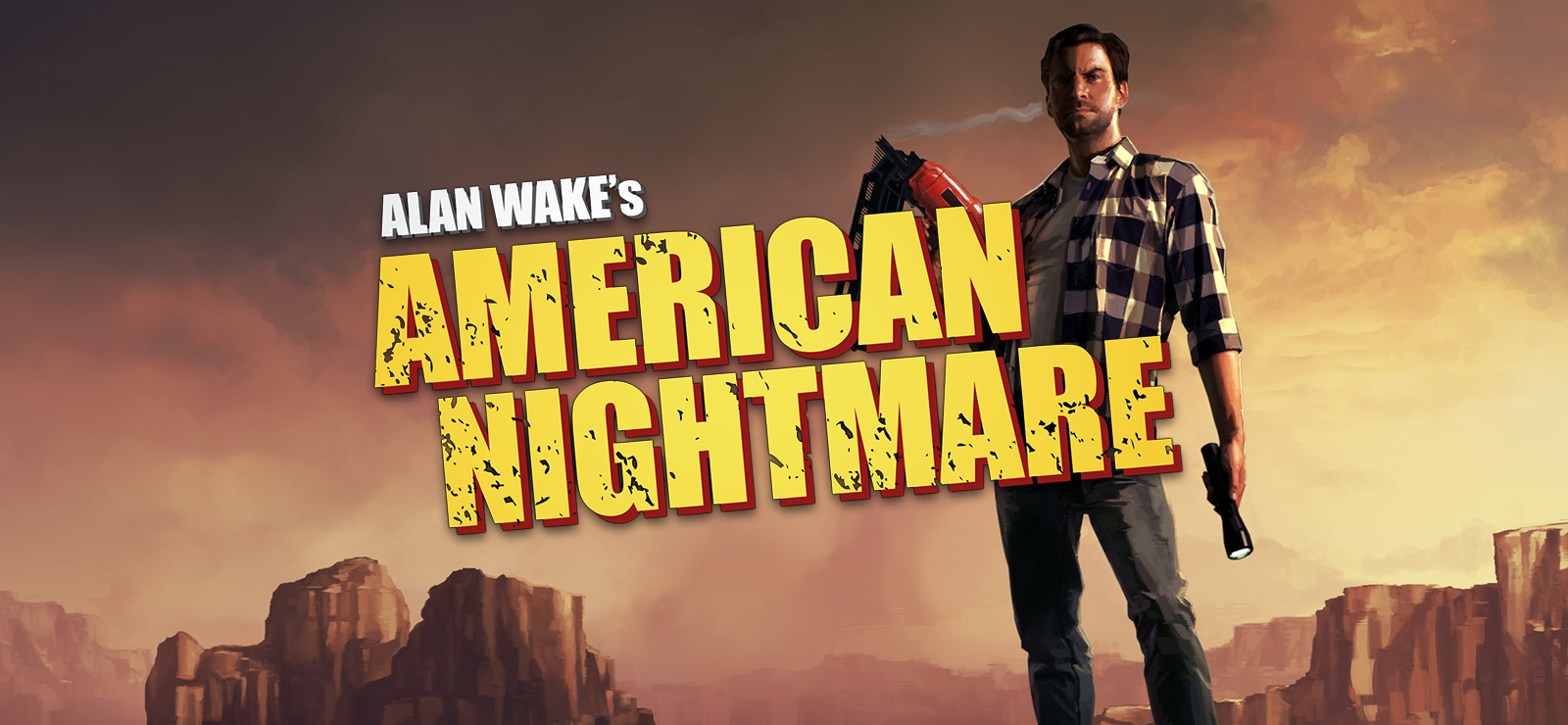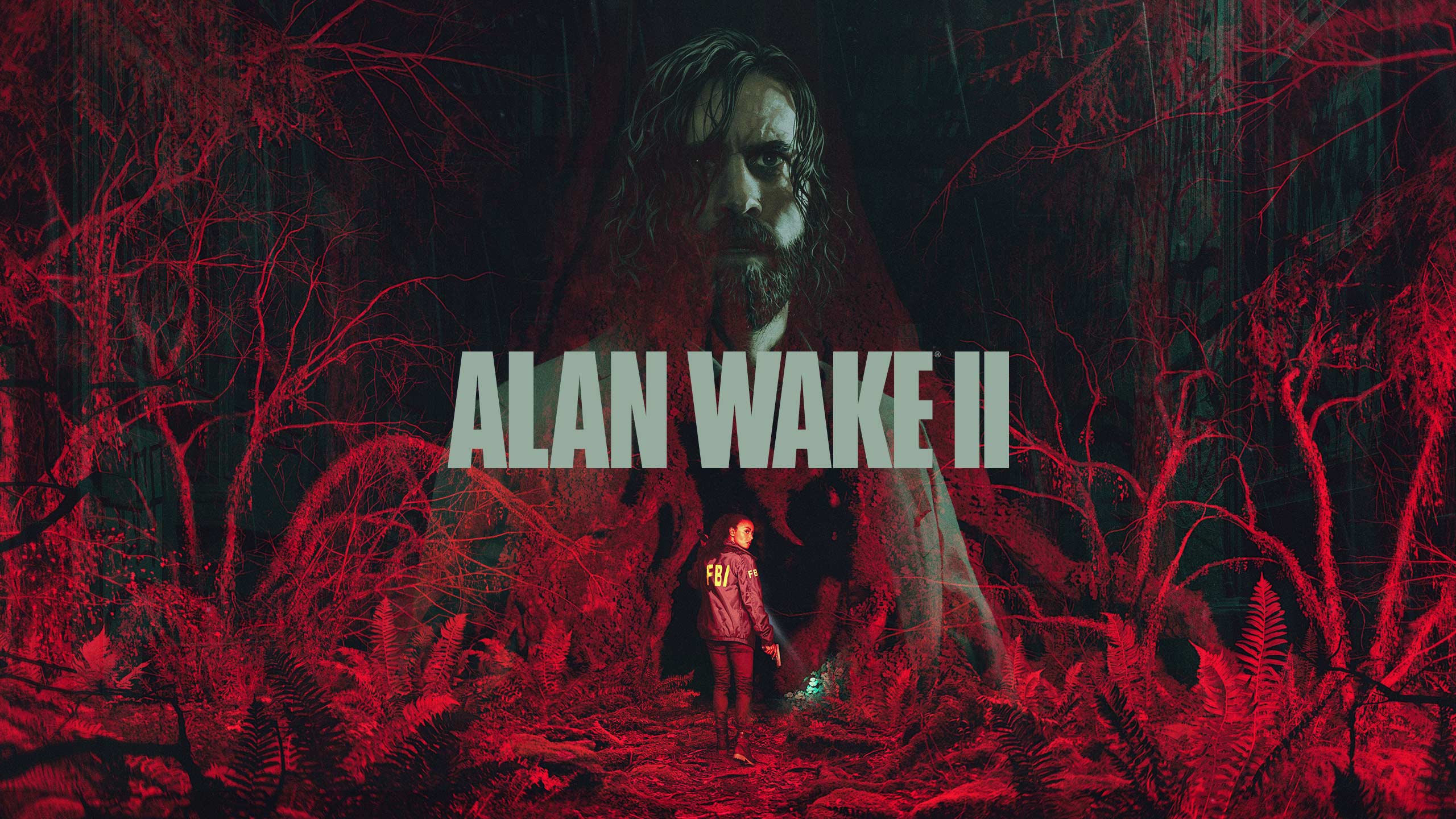
Video games are no strangers to breaking the fourth wall or, in some cases, outright shattering it. There are countless examples, but none have struck me as profoundly as the recent Alan Wake II and developer Remedy’s Connected Universe.
When Alan Wake was originally released on the Xbox 360 in 2010, it quickly became one of my all-time favorites. Still, since then, Remedy has grown, evolved, and even gone so far as to define the approach to crafting a self-aware narrative. Join me as I walk through how each of their titles has built upon this concept, culminating in the masterpiece that is Alan Wake II.
A Brief Overview of Remedy’s Connected Universe
Remedy Entertainment’s Connected Universe is a relatively recent development in the studio’s history, but it’s an important one and a key differentiator in their work. Fans have speculated that the studio’s games have been connected for a decade.
Still, it wasn’t confirmed officially until the release of Control’s AWE Expansion in 2020, which was a crossover between Alan Wake and Control.
Sam Lake, Creative Director at Remedy Entertainment, described the concept as: “The idea that the tales told in some of our games would be connected to each other, a connected world of stories and events with shared characters and lore. Each game is a stand-alone experience, but each game is also a doorway into a larger universe with exciting opportunities for crossover events.”
The release of Alan Wake II furthers this bridge between it and the universe of Control, but other hints point to past titles like Quantum Break being involved (even if Remedy can’t outright confirm this due to legal issues that we’ll discuss later).
The official bond between these two games has sparked speculation and excitement about what comes next. It’s an exciting time to be a gamer and a Remedy fan, but let’s talk about everything that led up to this blending of two worlds.
2010: Alan Wake Debuts on Xbox 360, and it Begins…

It’s insane to me to think that Alan Wake came out thirteen years ago. I lived in an apartment with two roommates and worked full-time at GameStop. I remember getting the collector’s edition home and jumping right into it.
It was magical, but given my unstable setup, something knocked the Xbox 360, putting one of those perfectly circular scratches in my disc. I had to beg the store manager at GameStop to swap it for another copy. It was not the best start, but we were back in business the following night.
The layers of the original Alan Wake are pretty easy to spot. Still, they’re crucial for grasping how Remedy and writer/director Sam Lake’s style has evolved since that initial release. For those unaware, the game stars a writer named Alan Wake, who takes a trip to a small town in the Pacific Northwest called Bright Falls. He hopes to get past his recent writer’s block and spend quality time with his wife, Alice.
Right off the bat, the opening monologue from Wake references Stephen King and comments on the nature of horror stories. It’s immediately self-aware of the fact that it it, itself, a horror story. This is just the beginning, though, because the premise of the original Alan Wake involves his wife being kidnapped by a dark force that preys on creatives like writers and artists.
After the opening scenes, Alan wakes up in a car crash with a week of his life gone. He soon starts finding pages of a story he doesn’t remember writing. In true horror story fashion, these pages prophesize events that will soon occur in the game.
I hope this article will inspire more people to play Remedy’s games so that I will keep spoilers to a minimum. Suffice it to say, the game goes on to paint this layered meta-narrative of a writer experiencing a story he wrote and seeking to change reality by once again leveraging the power that brought his story to life in the first place.
The game is structured like a TV series, with six episodes that even include a “previously on…” before you start the next chapter. It’s a twisting, turning narrative that builds a profound lore around a location called “Cauldron Lake,” which acts as a doorway to an entire dimension known as the “Dark Place.”
Another meta element I truly loved here was the in-game band “The Old Gods of Asgard,” who come up multiple times throughout the story. This fictional band has music recorded by the real-life band Poets of the Fall (one of my favorite bands of all time). Not only do the fictional members of the band play a role in the story of both Alan Wake games, but the music’s connection to the real world offers another amazing layer.
The game also employs live-action clips on televisions within the game world that portray episodes of a fictional series called Night Springs that Alan Wake himself worked on as part of the in-game lore. Remedy has long used live-action elements in their games, but we’ll see this evolve as we go through the timeline.
By the time you finish the original Alan Wake, you’ll be left with more questions than answers, but you’ll have a firm grip on how the rules of this world work. You’ll learn much about what makes horror stories tick, with plenty of commentary on the genre.
The game’s two bonus episodes (included in the Remastered release on modern consoles) also do a great job of building out more of the meta-narrative about Alan himself influencing reality by writing stories that utilize the power of Cauldron Lake to become real.
It was an incredible experience back then, but it was just the beginning. Next up, we have the spin-off, Alan Wake’s American Nightmare.
2012: Alan Wake’s American Nightmare Keeps the Dream Alive

In 2012, I was still working at GameStop, and part of me thought we’d hear about Alan Wake II soon. Yeah, I would be waiting a lot longer for the sequel. However! Remedy released an Xbox Live Arcade game (digital games were a relatively new concept at this point), and it was a mini-sequel.
The game in question, Alan Wake’s American Nightmare, takes place after the ending and DLC of the first game and pits Alan against his evil doppelganger, Mr. Scratch. It’s set in the fictional world of Night Springs, an in-universe TV show that Alan worked on that essentially feels like an homage to Twilight Zone.
As a result, this game was narrated by the Night Springs person and didn’t include as much of Alan’s narration as the first game. It’s a small detail, but one of my favorite things about the first game was how you were in Alan’s head the entire time.
These days, if you want to play this title, you can do so via backward compatibility on Xbox consoles, but PlayStation fans don’t have any way to play this on current hardware. It’s a shame because the game offers much more detail on Mr. Scratch than in the first game, and it features a new song from the in-universe band The Old Gods of Asgard (Poets of the Fall in real life).
The song in particular that you can find in this game is “Balance Slays the Demon,” it’s yet another example of how the metanarrative was beginning to grow behind the scenes if you knew where to look. Not only that, but it’s a total banger, as always.
There are minor spoilers here, but there’s a hidden message in the song where you can hear some reversed audio. If you play the audio backward, you get, “It will happen again in another town called Ordinary.”
This is crucial because it tells us about a key part of the story for Remedy’s future title, “Control,” years before the game ever saw the light of day, but before we talk about that one, we need to talk about the time-traveling elephant in the room.
2016: Quantum Break Remains Stuck in The Past (But You Should Still Play it!)

Quantum Break is one of my favorite titles from Remedy, but it was a game ahead of its time (pun intended). This time travel sci-fi game featuring talents like Shawn Ashmore, the late Lance Reddick, and Aidan Gillen of Game of Thrones fame it had a fantastic cast.
The game also included TV show episodes that would play between each of the major acts. So, you finish a big scene in the game, see the real-life actors in a big-budget show, and then go back into the game. It was amazing, and I loved every second of it, but being that the game was exclusive to Xbox and Games for Windows at the time, it didn’t get quite the attention it should have.
Since Quantum Break’s rights are still owned by Microsoft (and the game recently ran into some music licensing issues), Remedy cannot include the game officially in its connected universe. This is a damn shame because when you play through Quantum Break, you can find several Alan Wake-related easter eggs, including a trailer for “Return,” which was a teaser for Alan Wake II way back in 2016!
Check out that trailer below, and later in the article, try watching the final Alan Wake II trailer for the game we got to spot the differences!
To dive deeper down that rabbit hole, check out this Polygon article detailing the other Alan Wake II easter eggs in Quantum Break. It’s a fun read! Of course, these were meant to be more than easter eggs. Remedy was planting the seeds for their connected universe, after all.
Due to the licensing of the title, though, these references must remain easter eggs for the time being, but here’s hoping one day we can get a PS5 release of Quantum Break and maybe some official tie-in DLC for Control 2? A man can dream.
Hey, speaking of Control…
2019: Control Ties Everything Together in Spectacular Fashion

Until now, the references and nods to Remedy’s other games have been fun but not outright confirmations of a shared universe. With the release of Control in 2019, however, we finally got our answers (and plenty of new questions as well).
Control, on the surface, appears to be a completely separate story. You play as a woman named Jesse Faden, who arrives at the Federal Bureau of Control (FBC) headquarters right as the game starts.
I’ll stick to the specific events of the first hour or so to keep this as spoiler-free as possible (after all, I hope this article convinces more people to play these games).
In that first hour, you find out that Jesse’s brother has been missing since they were kids. She’s encountered the FBC after a supernatural event in her hometown of Ordinary (see the American Nightmare reference in that song), and she has some entity in her head that talks to her.
After exploring the FBC building, known as “The Oldest House,” Jesse discovers the director’s body early in the game. It appears he shot himself with his own weapon. She picks up the weapon, and just like that, she’s been chosen by “The Board” to be the new director of the FBC.
From here, the game introduces the enemies, which are people possessed by some malevolent force known as “The Hiss,” and the game kicks into high gear from there as you try to sort out your new job as Director, where the FBC is keeping your brother, and what happened in Ordinary all those years ago.
Control’s story is fantastic, but the lore is where the narrative shines. Remedy games have always had plenty of collectibles and in-game documents to discover and read, but Control took this to the next level and the level after that. Seriously, skipping over the documents, the unlockable videos, and the recordings you find will leave you with many gaps in your knowledge.
The richness of the FBC’s history, their various cases, the “Objects of Power” and “Altered Items” you encounter, and the hints of other dimensions and supernatural forces combine to make Control feel like a modern-day X-files game in the best way possible.
Things got way more interesting when you added in the DLC expansions “The Foundation” and “AWE.” Now, the Foundation is a significant expansion that offers deeper lore into the Oldest House itself, but AWE is the one I’ll be focusing on here.
AWE stands for “Altered World Event,” which the FBC uses to describe major supernatural or otherworldly nature disruptions. For example, Jesse’s experience in her hometown of Ordinary is an AWE.
Want to know what else is an AWE? You guessed it: Bright Falls and the story of the original Alan Wake. In this second expansion, Jesse will explore the remnants of the FBC’s investigation into Bright Falls, encounter Alan Wake himself via strange visions, and run into an old villain from the first Alan Wake throughout the course of the DLC.
So right there, we have our first cross-over event, and the moment Control joined Alan Wake in the Remedy Connected Universe. All of this came to a head when Sam Lake finally announced Alan Wake II at the Game Awards in 2021 and I proceeded to lose the entirety of my mind.
Now, let’s bring it home with my assessment of Alan Wake II.
2023: Alan Wake II Realizes The Potential of Remedy’s Connected Universe

That brings us to the present! I just finished Alan Wake II for the first time a few weeks ago, and it was one of the best games I’ve ever played. It was worth the 13-year wait for the sequel, and it brought together the Remedy Connected Universe in wonderful ways that have me dying for more.
The new game offers two playable characters in the form of Saga Anderson and Alan Wake himself. You can switch between them at will, but I enjoyed alternating between them with each story chapter. Saga herself is a wonderful new addition to the series (fun fact: my cat’s name is Saga).
Gameplay-wise, Alan Wake II takes everything good about the first game and cranks the dial up to 11. It’s truly a survival horror masterpiece, and the way it plays with light and darkness is just incredible.
The story is a darker, more mature narrative, but it retains that sense of humor and unique charm that the first game in the series was known for. It is the perfect sequel, but more specifically, I’d like to talk about how it elevates the entire Remedy Connected Universe.
Again, I am going for minimal spoilers here, but suffice it to say the Federal Bureau of Control appears pretty quickly in Alan Wake II, and they play a larger role in the game’s final chapters. I loved the way it was woven into everything. At no point is the FBC shoved in your face, but those who dig deeper and discover some specific side activities will be rewarded.
What I like the most about how Remedy handles this connected universe of theirs is how it all comes together organically. It’s impossible to talk about a universe like this without mentioning Marvel, so let’s do that quickly.
In Marvel, the crossovers are done almost literally with a wink from the writers. They are big, boisterous, and intended to make your jaw hit the floor. The connections are obvious and always front and center. It works for a superhero or superheroine story, but Remedy’s approach is far more subtle.
For example, eagle-eyed players can spot something as innocuous as a sign on a face in the opening chapter of Alan Wake II that mentions the FBC and has their logo. You can also pass their research station but won’t return to it until later.
These subtle hints are similar to easter eggs but given more impact because they’re canon to the story. When Remedy pulls in elements of their universe, they do so with a smirk. They know what they’re doing but are not in your face about it.
For example, the sheriff of Bright Falls in Alan Wake II is played by Shawn Ashmore, who was also in Quantum Break. This alone isn’t a connection between the two games, but wait until you see him again and tell me what you think. Legally, there can’t be a direct connection there, but you see what I’m saying.
Every narrative choice, especially concerning the meta-narrative, is intentional and organically woven into the world. The FBC does not feel out of place in Bright Falls, and nothing they do seems forced into the story of Alan Wake II, and yet, their presence, combined with the documents and side activities related to them, adds incredible depth beyond just this one game.
If Marvel’s cinematic universe is the entertainment version of comfort food, then Remedy’s Connected Universe is a carefully constructed four-course meal. Both are delicious, but they take vastly different approaches.
So what’s the takeaway here? This is just my journey through Remedy’s Connected Universe over the last 13 years, but I hope this will encourage others to dive in and play these titles.
Sam Lake and the team at Remedy are some of the most creative and masterful people in the gaming industry. I want to see them find all the success they so richly deserve, and more than that, I want them to continue building out this universe that has defined over a decade of my life as a gamer.
So that’s the takeaway. Please play these games, and let me know what you think of Remedy’s Connected Universe in the comments!
Article by – Bradley Ramsey
Insert date – 12/04/2023
